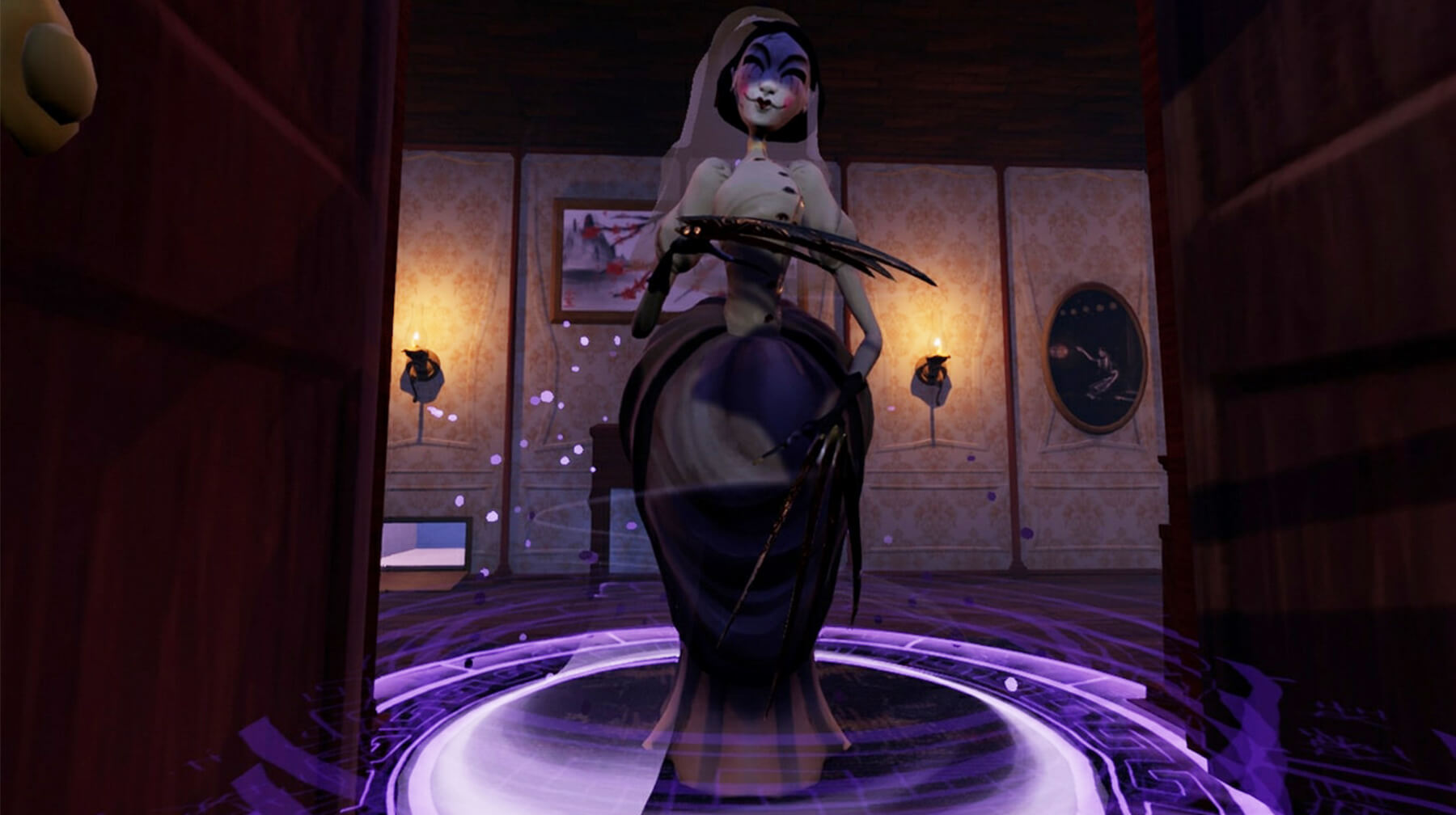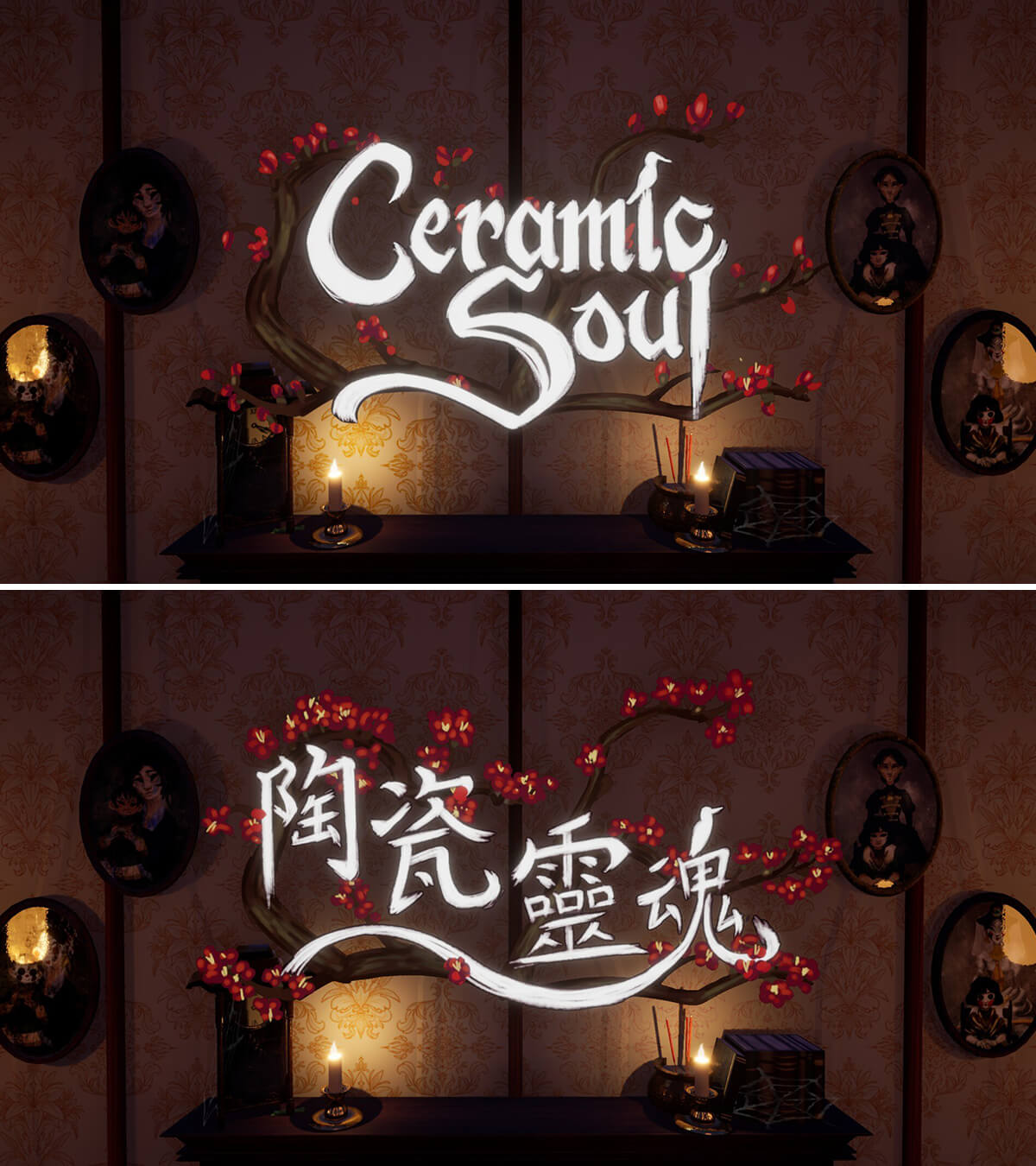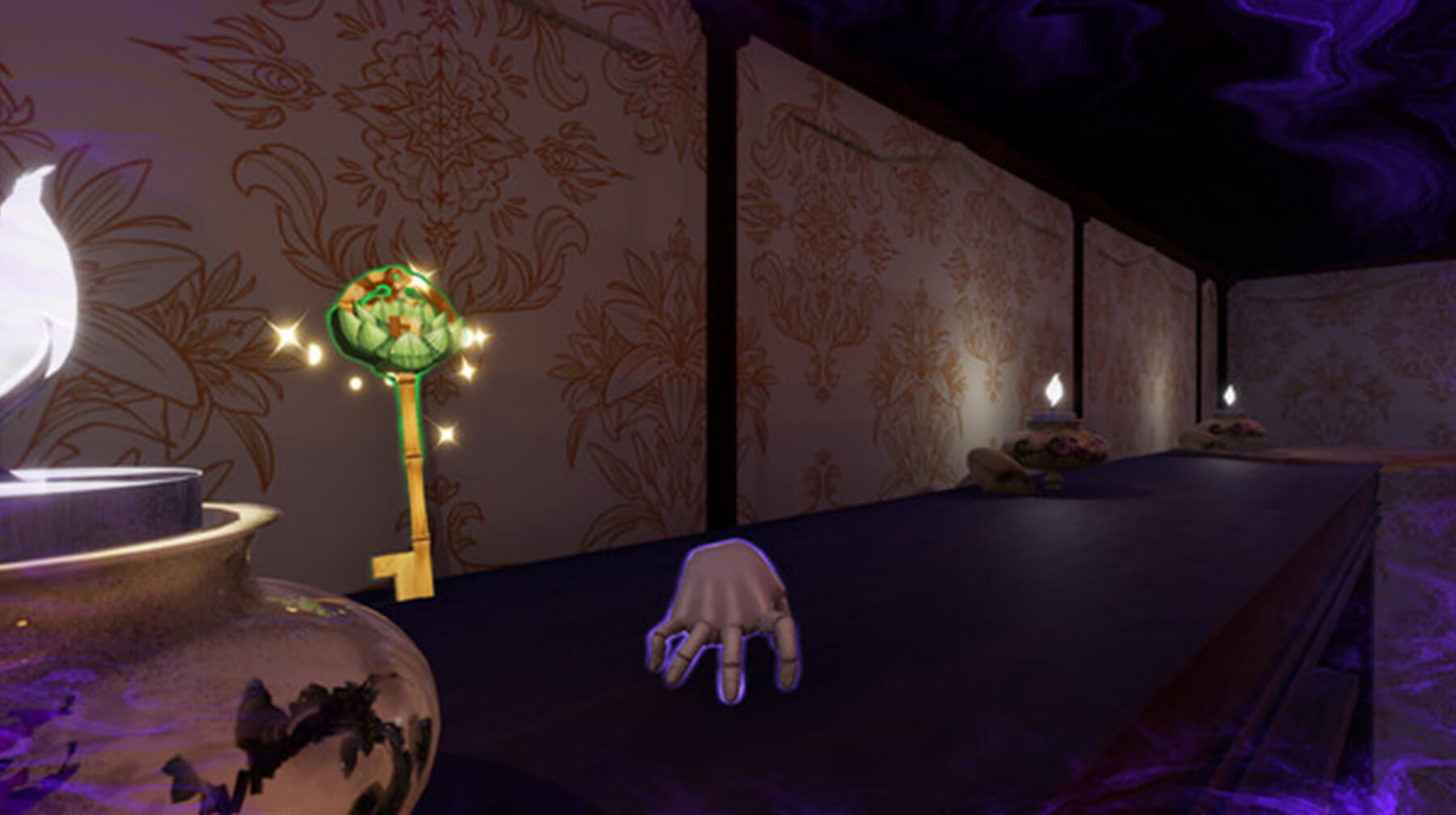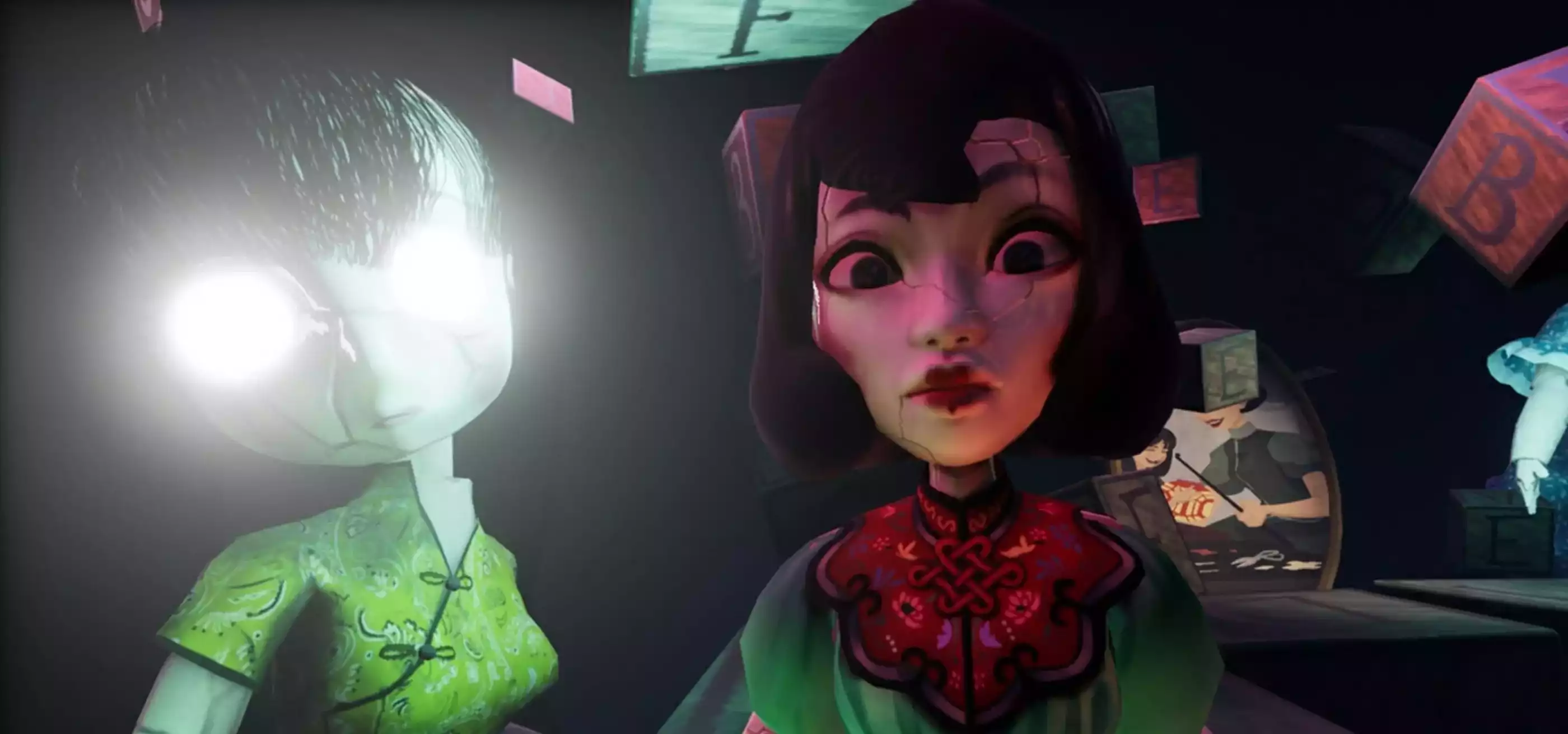Student team Soul Soup say that crafting their DigiPen game project Ceramic Soul was a very hands-on experience, somewhat ironic for a game where taking your hand off is a core feature. That’s because unlike the many games out there starring noble knights, spacefaring soldiers, and gritty antiheroes, Ceramic Soul is one of the few where players control a doll — the playable porcelain hero, Yu. “The initial concept was to create a horror game where you play as a doll in a dollhouse setting, where the main mechanic was removing your hand as it helps you solve puzzles,” says Soul Soup art lead and DigiPen BFA in Digital Art and Animation graduate Christine Medina. “We joked at some point that she would have DLC limbs.”
In the end, it didn’t end up being a dollhouse Yu explores in the final game. Instead, she ventures through a sizable, spooky manor whose look fuses two distinct cultural aesthetics, Victorian and Chinese. Inspired by Chinoiserie, an 18th-century art style born from European interpretation of Chinese visual tradition, Soul Soup concocted a unique look that served as a jumping off point for the rest of development. “As some of our teammates and myself are Chinese, it meant putting things that were personal and familiar to us from our own experiences into the artwork,” says Soul Soup creative director and DigiPen BFA in Digital Art and Animation graduate Chelsea Liang. “It later influenced the narrative and the themes of the game as well.”

Ceramic Soul’s hero isn’t any ordinary doll. Imbued with a fractured soul, she was created as a stand-in daughter for The Mother, also known as The Bride. The spectral, claw-handed woman holds Yu captive in her puzzle-filled manor, acting as an unsettling, ever-present threat to players throughout the game. But things are more complicated than simple good and evil in Soul Soup’s tale. “I emphasized to the designers that no matter what, I did not want The Bride to be viewed as a typical ‘bad guy’ by the end of the game,” Liang says. “The story of Yu and The Bride is tragic but not uncommon, especially so in immigrant Chinese families.” Drawing upon their own experiences in the Chinese diaspora, Liang used Ceramic Soul to explore the difficult dynamics that can arise between immigrant parents and their children through the game’s narrative.

“For many immigrants and their children in Western spheres, it’s all too common to feel isolated and pressured to fit white society’s standards,” Liang says. “Parents, especially, feel pressured to make sure their children don’t suffer under public scrutiny. For The Mother, it meant pushing her daughter to be the most perfect she can be, without flaw.” To reflect the difficulty of straddling cultures, Medina even designed two versions of the game’s title card — one in English and another in Chinese. “I had a lot of help on the stroke orders from my teammates when making the characters for the Chinese title,” Medina says. “The challenge was making it look like calligraphy but still match the design of the English title.”
When designing Yu’s quest to uncover her past and escape to her freedom, Soul Soup played with the scale differences between the miniature player and her massive surroundings before finding a sweet spot. “The aesthetics, narrative, and theme stayed consistent through the entire process, but pretty much everything else changed,” says Soul Soup producer and BFA in Digital Art and Animation graduate Skye Mednick. “Our rooms were huge, which made you feel tiny, but were a nightmare to navigate and populate with art assets.”
Nailing the game’s central mechanic — Yu’s removable, controllable hand — also took experimentation to perfect. “It was a running joke in the team that we should have her throw her arm or leg to distract the enemies,” Liang says. “We even had the idea of enemies being able to pick up your parts.”

Once Soul Soup’s many initial design ideas were pared down, the game’s final form began to emerge. “When we decided to cut mechanics that weren’t working and flesh out ones we liked, the levels were completely overhauled,” says Mednick.
Through lots of playtesting and two years of development, Soul Soup began honing in on a gameplay balance that felt true to the experience they wanted to convey. “Our systems, levels, and UX features were all designed with a horror atmosphere and play style in mind,” says Soul Soup UI/UX designer and BA in Game Design graduate Johnny White. “Puzzles were designed to feed into the mystery of the mansion, with enemy encounters throughout adding to the tension and scare factor. We limited our character’s mobility to make running away less of an option. It’s a restrictive experience that constantly reminds the player that they have no power in this world and must avoid threats at all cost to escape.”
The team had to learn to be restrictive themselves in order to bring the ambitious project to completion. Serving as many of the team members’ first foray into the Unreal Engine, optimizing the game’s detailed art assets proved challenging. “It’s easy for draw calls, poly counts, and texture resolutions to get out of hand,” Mednick says. “I’m really proud of the uber shader I made, applying a series of brush stroke patterns over textures to make them feel more painterly. This saved a ton of time and helped reduce the drag textures had on performance.”
Perfecting Yu’s look also meant working within certain constraints. “It was a fun challenge making her design fit the Chinoiserie aesthetic. Our player went through so many iterations,” Medina says. “At first I struggled making her dress, and she initially was going to have [real-time hair rendering technique] haircards. But it didn’t look right for the game, and it wasn’t optimized.”
All the hard work paid off in the end. Since landing on Steam, Ceramic Soul has been met with enthusiastic Let’s Play videos and even pieces of fan art. “It’s surreal,” Mednick says. “To see so many people play it, talk about the atmosphere, and just really enjoy this little project we made is absolutely wonderful. I was not expecting someone to make fan art of our student project, and it’s a great feeling.”
Although shipping the game meant surmounting plenty of obstacles, the strength it took to push through has become a point of pride for the team. “I’m really proud of not just what we were able to create, but how we were able to overcome our issues and the grit that we showed developing it,” says White. “Teamwork is everything. Designers, artists, programmers, musicians — it takes everyone putting in their best work to create that final product.”
